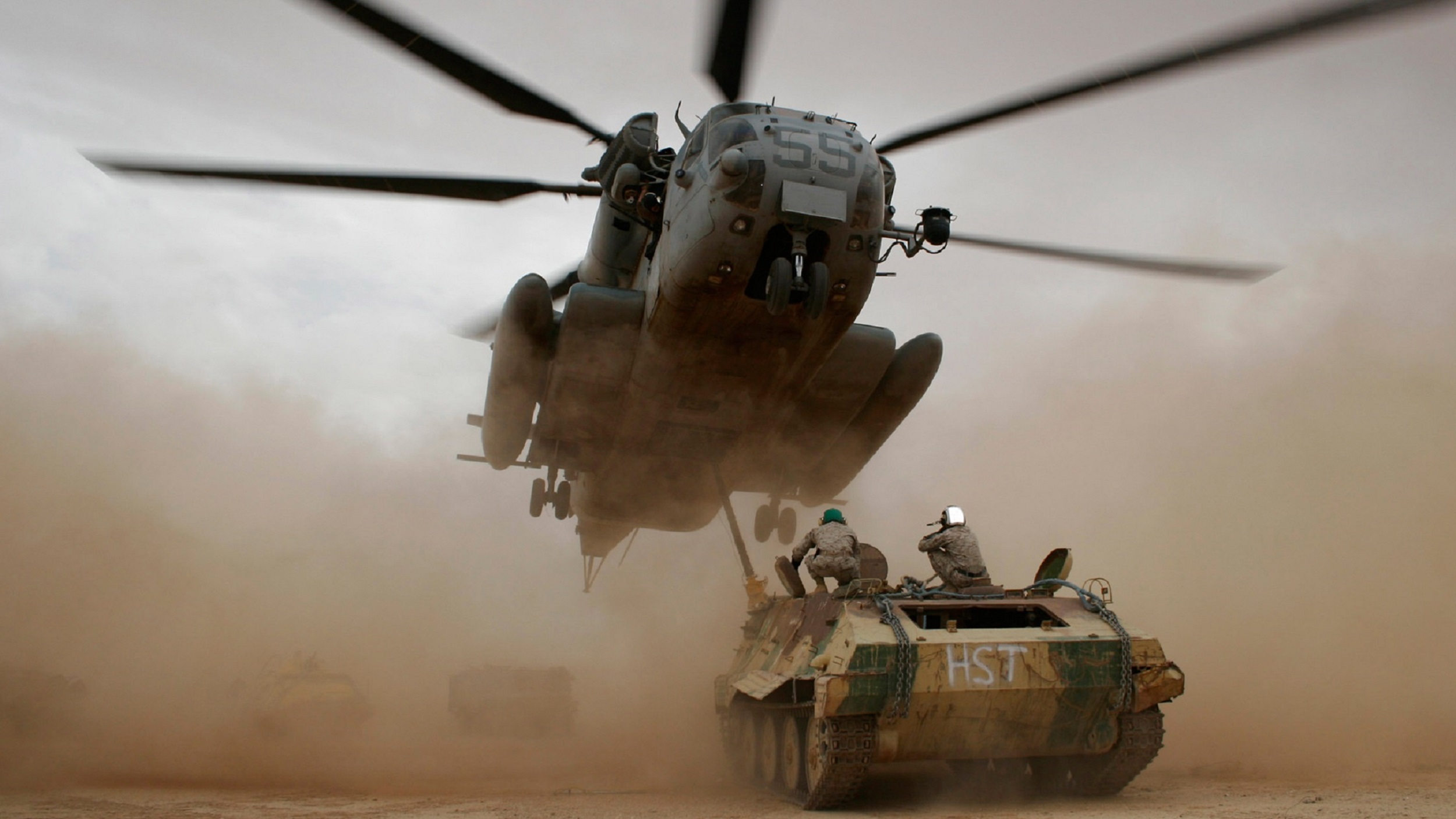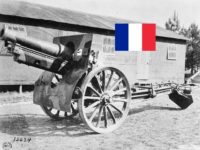The Canon de 155 C modèle 1917 Schneider was a French cannon, that from the Canon de 155 C model 1915 Schneider developed only to be able to shoot another ammunition.
In 1910, the French company Schneider developed the M1910 howitzer, which was sold to the Russian Empire. From this gun later the models Canon de 105 modèle 1913, Canon de 155 L modèle 1877/1914 and also the Canon de 155 C model 1915 Schneider, whose production began in 1915 shortly after the outbreak of the First World War, emerged.
The C Model 1915 was a standardized gun with a hydropneumatic recoil system mounted under the barrel. The ammunition used was brass cartridge cases, which were more difficult to load than other guns.
The barrel was extended in contrast to the predecessor model, which led to a significantly higher range, but also to a higher weight. By mounting 4 wooden wheels on steel rims, the gun could nevertheless be pulled by 8 horses or a truck at a lower speed. In addition, a protective shield was attached to the barrel to protect the operating crew.
In the course of the First World War and the high consumption of ammunition, it quickly became apparent that the brass ammunition used was neither available in sufficient quantities nor that the high costs were in proportion to the demand. For this reason, Schneider was asked to adapt the breech of the Canon de 155 C Model 1915 Schneider so that the gun could use the larger quantities of ammunition with bag loads.
Schneider agreed to the request and began to exchange the used breech for the de Bange breech. However, the exchange took longer than expected, so that the model now introduced under the name Canon de 155 C modèle in 1917 could only go into serial production at the end of 1916.
Altogether over 3.000 Canon de 155 C modèle 1917 Schneider guns were built or the predecessor model adapted.
Until the end of the First World War and also afterwards, the 155 mm gun became the standard weapon of the French artillery. With some modifications and adaptations, 2,043 guns were still available to the French army at the beginning of the Second World War. After the defeat, they were mainly captured by the German Wehrmacht and used in the Atlantic Wall.
In addition to the French army, the 155 mm gun was also used in large quantities by the US Army in the First World War. In 1917 they had their own 6 inch howitzer as standard gun, but a comparison with the French gun showed that the American model was clearly outdated. The USA then bought a total of 1,503 French guns and the licence to produce their own in the USA. Under the designation Model 1918, 626 guns were built in the USA. These differed mainly in the shield, which was straight rather than bent. In addition, wooden tyres were no longer used but rubber tyres.
After the First World War, the guns used in France were transported back to the USA, where they were adapted and modernised over the next few years. With the beginning of World War II, the US Army used these guns almost exclusively in the Pacific War until they were replaced in 1942 by the modern 155 mm howitzer M1.
In addition, Finland, Poland, Spain, Portugal, Argentina, Belgium, Greece and Italy received some of the guns at the end of or after the First World War.
Russia also received an unconfirmed number of guns and captured over 100 more after the invasion of Poland in 1939. However, the whereabouts of these are unknown, at least they were no longer used after the invasion of the German Wehrmacht in 1941.
Data sheet:
| Designation: | Canon de 155 C modèle 1917 Schneider |
| Manufacturing country: | France |
| Introductory year: | 1917 |
| Number of pieces: | more than 3.000 pieces |
| Calibers: | 155 mm |
| Tube length: | 2,176 meters |
| Range: | Max. 11.300 meters |
| Weight: | 3,3 tons |
You can find the right literature here:
Flesh and Steel During the Great War: The Transformation of the French Army and the Invention of Modern Warfare

Flesh and Steel During the Great War: The Transformation of the French Army and the Invention of Modern Warfare Hardcover – October 30, 2018
Michel Goya’s Flesh and Steel during the Great War is one of the most thoughtful, stimulating and original studies of the conflict to have appeared in recent years. It is a major contribution towards a deeper understanding of the impact of the struggle on the Western Front on the theory and practice of warfare in the French army. In a series of incisive, closely argued chapters he explores the way in which the senior commanders and ordinary soldiers responded to the extraordinary challenges posed by the mass industrial warfare of the early twentieth century.
In 1914 the French army went to war with a flawed doctrine, brightly-colored uniforms and a dire shortage of modern, heavy artillery How then, over four years of relentless, attritional warfare, did it become the great, industrialized army that emerged victorious in 1918?
To show how this change occurred, the author examines the pre-war ethos and organization of the army and describes in telling detail how, through a process of analysis and innovation, the French army underwent the deepest and fastest transformation in its history.
Breaking Point of the French Army: The Nivelle Offensive of 1917
In December 1916 General Robert Nivelle was appointed Commander-in-Chief of the French armies fighting the Germans on the Western Front. He had enjoyed a meteoric rise to high command and public acclaim since the beginning of the war - he was a national hero. In return, he proclaimed he ‘had the formula’ that would ensure victory and end the conflict in 1917. But his offensive was a bloody and humiliating failure for France, one that could have opened the way for French defeat.
This is the subject of David Murphy’s penetrating, in-depth study of one of the key events in the history of the Great War. He describes how Nivelle, a highly intelligent and articulate officer, used his charm to win the support of French and British politicians, but also how he was vain and boastful and displayed no sense of operational security. By the opening of the campaign, his plan was an open secret and he had lost the ability to critically assess the operation as it developed. The result was disaster.
They Shall Not Pass: The French Army on the Western Front 1914-1918
This graphic collection of first-hand accounts sheds new light on the experiences of the French army during the Great War. It reveals in authentic detail the perceptions and emotions of soldiers and civilians who were caught up in the most destructive conflict the world had ever seen.
Their testimony gives a striking insight into the mentality of the troops and their experience of combat, their emotional ties to their relatives at home, their opinions about their commanders and their fellow soldiers, the appalling conditions and dangers they endured, and their attitude to their German enemy. In their own words, in diaries, letters, reports and memoirs - most of which have never been published in English before - they offer a fascinating inside view of the massive life-and-death struggle that took place on the Western Front.
Ian Sumner provides a concise narrative of the war in order to give a clear context to the eyewitness material. In effect the reader is carried through the experience of each phase of the war on the Western Front and sees events as soldiers and civilians saw them at the time. This emphasis on eyewitness accounts provides an approach to the subject that is completely new for an English-language publication.
The author’s pioneering work will appeal to readers who may know something about the British and German armies on the Western Front, but little about the French army which bore the brunt of the fighting on the allied side. His book represents a milestone in publishing on the Great War.
Artillery in the Great War
Artillery was the decisive weapon of the Great War - it dominated the battlefields. Yet the history of artillery during the conflict has been neglected, and its impact on the fighting is inadequately understood. Paul Strong and Sanders Marble, in this important and highly readable study, seek to balance the account.Their work shows that artillery was central to the tactics of the belligerent nations throughout the long course of the conflict, in attack and in defense. They describe, in vivid detail, how in theory and practice the use of artillery developed in different ways among the opposing armies, and they reveal how artillery men on all sides coped with the extraordinary challenges that confronted them on the battlefield. They also give graphic accounts of the role played by artillery in specific operations, including the battles of Le Cateau, the Somme and Valenciennes.Their work will be fascinating reading for anyone who is keen to understand the impact of artillery
This post is also available in:
 Deutsch (German)
Deutsch (German)  Français (French)
Français (French)  Italiano (Italian)
Italiano (Italian)  简体中文 (Chinese (Simplified))
简体中文 (Chinese (Simplified))  Русский (Russian)
Русский (Russian)  Español (Spanish)
Español (Spanish)  العربية (Arabic)
العربية (Arabic)




















